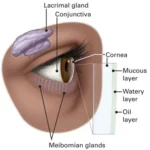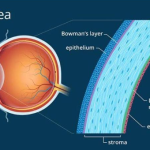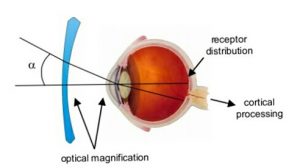The Role of NSAIDs in Ophthalmology
Nonsteroidal anti-inflammatory drugs (NSAIDs) are a cornerstone in the management of various ophthalmic conditions. They provide significant anti-inflammatory and analgesic benefits, which are critical in treating and managing eye diseases and conditions. This blog delves into the mechanisms, applications, benefits, and considerations of using NSAIDs in ophthalmology.
Understanding NSAIDs
NSAIDs are a class of medications that inhibit cyclooxygenase (COX) enzymes, particularly COX-1 and COX-2. These enzymes are crucial in the biosynthesis of prostaglandins, which are lipid compounds that play a key role in inflammation, pain, and fever. By inhibiting COX enzymes, NSAIDs reduce the production of prostaglandins, thereby alleviating inflammation and pain.
Mechanism of Action
NSAIDs primarily function by blocking COX enzymes:
1. COX-1 Inhibition: COX-1 is involved in maintaining normal cellular functions, including protecting the gastrointestinal lining and regulating blood platelets. Inhibition of COX-1 can led to side effects such as gastrointestinal irritation and increased bleeding risk.
2.COX-2 Inhibition: COX-2 is an inducible enzyme that is upregulated during inflammation. Inhibiting COX-2 reduces inflammation and pain with fewer gastrointestinal side effects compared to COX-1 inhibition.
Applications in Ophthalmology
NSAIDs are used in various ophthalmic conditions, both in topical and systemic forms. Here are some key applications:
1.Postoperative Inflammation and Pain:
Cataract Surgery: Topical NSAIDs such as nepafenac and bromfenac are commonly used to manage inflammation and pain following cataract surgery. They help reduce the risk of cystoid macular oedema (CME), a complication that can impair vision.
Refractive Surgery: NSAIDs are also used post-refractive surgeries like LASIK to control pain and inflammation.
2.Management of Ocular Surface Diseases:
Allergic Conjunctivitis: NSAIDs can be used to alleviate the symptoms of allergic conjunctivitis by reducing inflammation.
Dry Eye Syndrome: In some cases, NSAIDs are used to manage the inflammation associated with dry eye syndrome, although they must be used cautiously due to potential corneal toxicity.
3.Corneal Pain and Inflammation:
Corneal Abrasions and Injuries: NSAIDs help manage pain and inflammation in patients with corneal abrasions or other injuries.
4. Uveitis:
In cases of non-infectious uveitis, NSAIDs can be used as an adjunct to steroids to control inflammation and reduce the dosage of steroids required.
5.Cystoid Macular Oedema (CME):
Apart from preventing CME post-surgery, NSAIDs are used in the treatment of CME associated with other conditions like diabetes and retinal vein occlusions.
Benefits of NSAIDs in Ophthalmology
1.Anti-inflammatory Effects: By reducing prostaglandin synthesis, NSAIDs effectively control inflammation, which is a common pathway in many ocular diseases.
2.Analgesic Properties: NSAIDs provide significant pain relief, which is crucial for patient comfort, especially post-surgery or in acute injuries.
3.Steroid-Sparing: In chronic conditions like uveitis, NSAIDs can reduce the dependence on corticosteroids, thereby minimizing the side effects associated with long-term steroid use.
4.Prevention of Surgical Complications: The use of NSAIDs in the perioperative period helps reduce the risk of complications like CME, ensuring better surgical outcomes.
Considerations and Side Effects
Despite their benefits, NSAIDs have certain limitations and potential side effects that need
to be carefully considered:
1.Gastrointestinal Issues: Systemic NSAIDs can cause gastrointestinal irritation, ulcers, and bleeding due to COX-1 inhibition.
2.Renal Effects: Long-term use of systemic NSAIDs can affect renal function, particularly in patients with pre-existing kidney conditions.
3.Cardiovascular Risks: Some NSAIDs have been associated with increased cardiovascular risks, necessitating caution in patients with cardiovascular disease.
4.Corneal Toxicity: Prolonged use of topical NSAIDs can lead to corneal epithelial breakdown and delayed wound healing. Therefore, monitoring and proper dosing are crucial.
5.Allergic Reactions: Although rare, some patients may experience allergic reactions to NSAIDs.
Innovations and Future Directions
The development of newer NSAIDs and delivery systems continues to enhance their efficacy and safety profile. Some of the advancements include:
1.Prodrug Formulations: Prodrugs like nepafenac are converted to the active drug (amfenac) in ocular tissues, providing targeted action with minimal side effects.
2.Advanced Delivery Systems: Innovations such as drug-eluting contact lenses and sustained-release formulations aim to provide prolonged drug delivery, improving patient compliance and outcomes.
3.Selective COX-2 Inhibitors: Research into selective COX-2 inhibitors aims to maximize anti- inflammatory effects while minimizing gastrointestinal and renal side effects.
Conclusion
NSAIDs play a vital role in ophthalmology, offering significant benefits in managing inflammation, pain, and postoperative complications. While their efficacy is well- established, careful consideration of their side effects and proper patient selection are essential for optimal outcomes. Continued research and innovation promise to further enhance the therapeutic potential of NSAIDs in ocular health, ensuring they remain a cornerstone in the management of various ophthalmic conditions. By understanding the mechanisms, applications, and advancements in NSAIDs, ophthalmologists can better tailor treatments to individual patient needs, improving both their ocular health and overall quality of life










